Sixty Collection, 9mm Akoya Pearl Stud Earrings, Silver Findings | Japanese Saltwater Pearls, Halloween Jewelry Gift
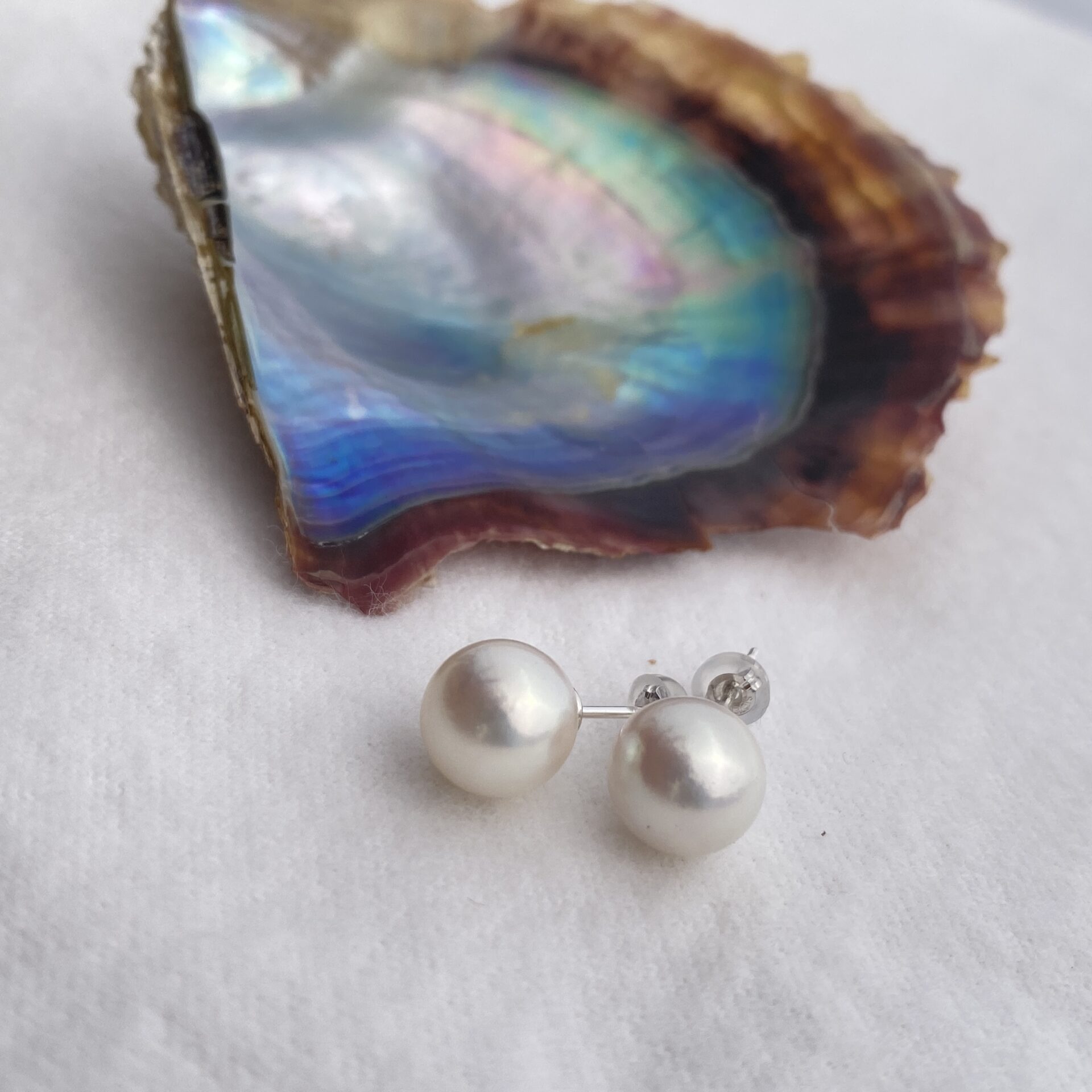

Tsuioku
$142.66
1 in stock
The pearls were obtained from the great-grandson of Yasuie Tōdō, the inventor of pearl stain removal in 1922 and founder of Takahashi Pearl. More than a century ago, Tōdō invested in pearl farms in Sukumo City, Kōchi Prefecture, where the world’s first round cultured pearls were created. Although a flood in 1920 destroyed those farms, his later invention of stain removal became a cornerstone of modern pearl processing and remains widely used today.
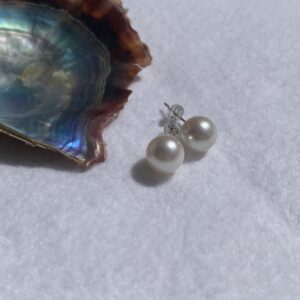
Kept in his family for decades, these pearls are estimated to be at least 60 years old—likely older, perhaps from the period when Sukumo’s pearl farms were still active. While they are not flawless, their meaning lies in their origin and the history they carry.
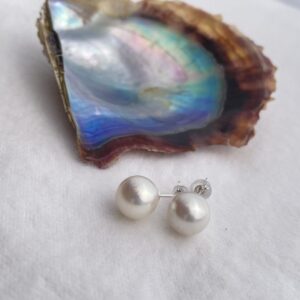
At Flower Jem, I have named these pearls the Sixty Series. If you would like to learn more about the history behind the Sixty Series, please visit here:
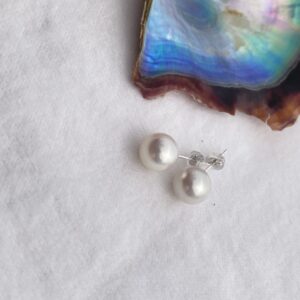
In this time, I am introducing a pair of 9mm stud earrings from this series. These pearls were harvested at least 60 years ago, yet they remain in remarkably good condition. In the past, pearl cultivation was said to last not just one or two years, as it does today, but three to four years or even longer. Because of this, the nacre layers became thicker and more durable.
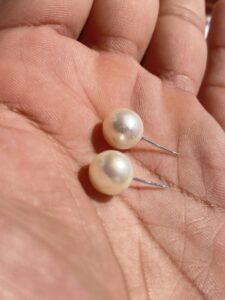
These earrings feature pearls measuring 9.00 mm and 9.15 mm.
When you look closely at the surface, you can see fine textures, almost like the wrinkles of human skin. Or perhaps more like the surface of the moon. Whether this is because the pearls are old is uncertain—new pearls can also show such features. Still, despite this, these pearls possess a gentle glow, slightly stronger than a subdued luster. If the surface had been perfectly mirror-like, the shine would have been even more intense. Their color is primarily white with hints of silver. As for imperfections, there are small bumps and depressions (wounds), as shown in the images. Yet overall, they are round and beautiful pearls.
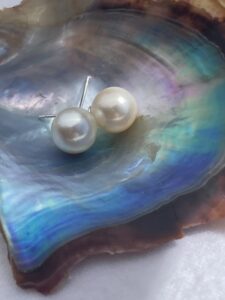
At Flower Jem, I value not only the outward beauty of pearls but also the perspective of pearl cultivation itself, and I share that beauty on Etsy, my website, and social media. This pair is no exception. They are not only pearls harvested more than 60 years ago, but also pearls tied to Yasuie Tōdō—the man who invented pearl stain removal. Today almost all Akoya pearls on the market, except for natural blues and a few others, undergo stain removal. It has become so standard that people forget someone first invented the process.
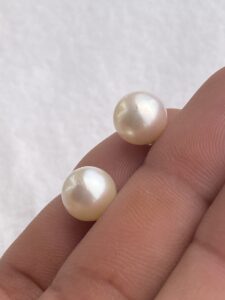
As I wrote in the article linked above, I had the chance to meet and build a connection with Mr. Tōdō’s great-grandson some years ago. He is not a famous person, just one of the many who worked with pearls, and within the trade, some people know him as “that kind and gentle man.”
The Tōdō family name itself carries history. It is connected to the renowned samurai Tōdō Takatora, active from the Sengoku period into the early Edo period. Yasuie Tōdō’s ancestors served as retainers to Takatora, which is why the family carries the Tōdō name. For those interested in Japanese samurai history, that connection might be fascinating—though, to be honest, I myself am not particularly drawn to samurai tales.
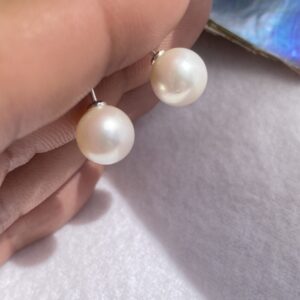
In any case, the true value of these earrings lies not only in their appearance but also in the history they embody. A 9 mm Akoya pearl earring is not rare, and there are certainly more flawless ones available.
These pearls come from Sukumo City in Shikoku, Japan, a birthplace of pearls. Mikimoto in Ise succeeded first in producing half-round cultured pearls, but the world’s first true round cultured pearls were produced in Sukumo. Had it not been for the devastating flood that struck a few years later, Sukumo might have stood alongside Ise as a great pearl capital. Even today, some people in Sukumo speak with regret: “If only that flood had never happened…”
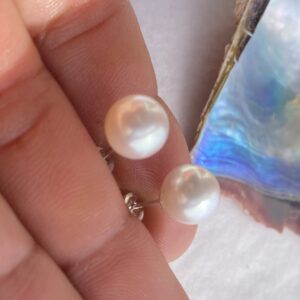
Ise thrives with tourists as Mikimoto’s stronghold, while Sukumo remains quiet and forgotten. Sukumo’s brief glory in cultivating round pearls was washed away, but Yasuie Tōdō went on to invent stain removal—a breakthrough that came to him one day while passing a shrine with his daughter, according to one account. Inspiration often arrives at the most ordinary of moments.
The Sixty Series pearls embody many dramas: the glory of a legendary pearl site, defeat by natural disaster, and later, historic success through invention.
Incidentally, Yasuie Tōdō was also the founder of Takahashi Pearl. Outside Japan, Takahashi Pearl may be one of the most recognized names in the pearl world (Mikimoto and Tasaki are in a different category as global jewelry brands).
Since I began selling pearls on Etsy, I have heard many overseas customers refer to Takahashi Pearl, which made me realize its international reputation. The current president, I’m told, is an avid runner, with sun-darkened skin reminiscent of Tahitian black pearls.
Years ago, when I was still working in Kobe’s pearl industry, I sometimes visited a nearby bar after work to read while having a drink. One evening, the president of Takahashi Pearl happened to sit near me. Smiling kindly, he said, “Don’t worry about me, please continue your reading.” Understanding the unspoken tension I felt, he put me at ease.
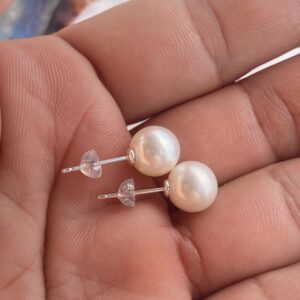
After about an hour, he left with a friendly “See you again!” Later, when I went to pay, the bartender told me my bill had already been covered—quietly paid by the president. That gesture struck me deeply, a true heart-blow rather than a body-blow. Such scenes are common in movies, but experiencing it in real life left a lasting impression.
This story may seem unrelated, but it illustrates how these old pearls hold not only layers of history but also my personal memories.
As I mentioned in the linked article, the history of Sukumo pearls takes some time to unfold, but learning it enriches the meaning of these pearls. They become like a small book of pearl history hanging from your ears. Still, I do not reflect such historical value in the price. At Flower Jem, pricing is based only on the Akoya pearl market value and what I paid when acquiring them.
Value and price do not always align. A child’s origami gift, for example, is a priceless treasure to me, though it cost nothing. I remember a friend’s daughter once crying, clinging to me and begging, “Don’t go.” Each time I left their home, my heart ached. Perhaps if I had stayed, after a while she would have asked, “Jem, aren’t you going home yet?”
In that sense, treasures often lie in emotion and memory rather than price.
So please take your time with these pearls harvested over 60 years ago, and perhaps spend a moment in Tsuioku—the Japanese word for “Remembrance”—reflecting on your own city, your parents, and your memories.
Here is the video that captures the making process of these earrings:
Around the 2:00:50 mark, you can see these earrings in progress. The pearl pairs labeled A through E are the Sixty Series, and this particular pair, Tsuioku, corresponds to pair B. Watching the video will also allow you to compare them with the other Sixty Series pieces. I invite you to take a look.
Flower Jem | Pearl Bless You
Website : https://flower-jem.com/
Etsy.com : https://www.etsy.com/shop/FlowerJem/
X(Twitter) : https://twitter.com/flower_jem/media
Instagram : https://www.instagram.com/flowerjem/
Pinterest : https://www.pinterest.jp/FlowerJem7/japanese-akoya-pearls/
Youtube : https://www.youtube.com/channel/UC-XdiEaNB5R56_TXGf2NUww